
The Carbon Threat
Across nine million square miles at the top of the planet, climate change is writing a new chapter. Arctic permafrost is thawing much faster than expected, releasing carbon gases that could reshape the planet and drastically speed up global warming. It is already transforming the landscape and changing the lives of people and animals from Alaska to Siberia.
Permafrost, found mostly in the Arctic, is a layer of continuously frozen soil that covers almost 1/4th of the Earth’s surface. Most permafrost areas have been frozen for more than 10,000 years. Trapped inside permafrost are carbon dioxide and methane gas built up from thousands of years of decomposing organic matter-greenhouse gases that if released into the atmosphere by permafrost thaw will make today’s fossil fuel emissions look like chump change.
We are now dangerously close to a tipping point where permafrost thaw will feed on itself, releasing more greenhouse gases, which will fuel more warming. Geologically speaking, permafrost is thawing almost overnight. What scientists came to believe was once hundreds of years away could now happen in our lifetime, with permafrost thaw releasing 2 to nearly three 3 times more greenhouse gases than expected. It is perhaps the least appreciated and well-known reason to hasten a transition to cleaner energy.

Thawing permafrost beneath the earth's surface releases methane gas into Arctic lakes causing gas bubbles to form in the frozen water. If the gas is released, just a small flame can create a huge (brief) fire on top of the lake's surface, as demonstrated by Melanie Engram and Allen Bondo on a pond near Smith Lake in Fairbanks, Alaska. November 13, 2018.
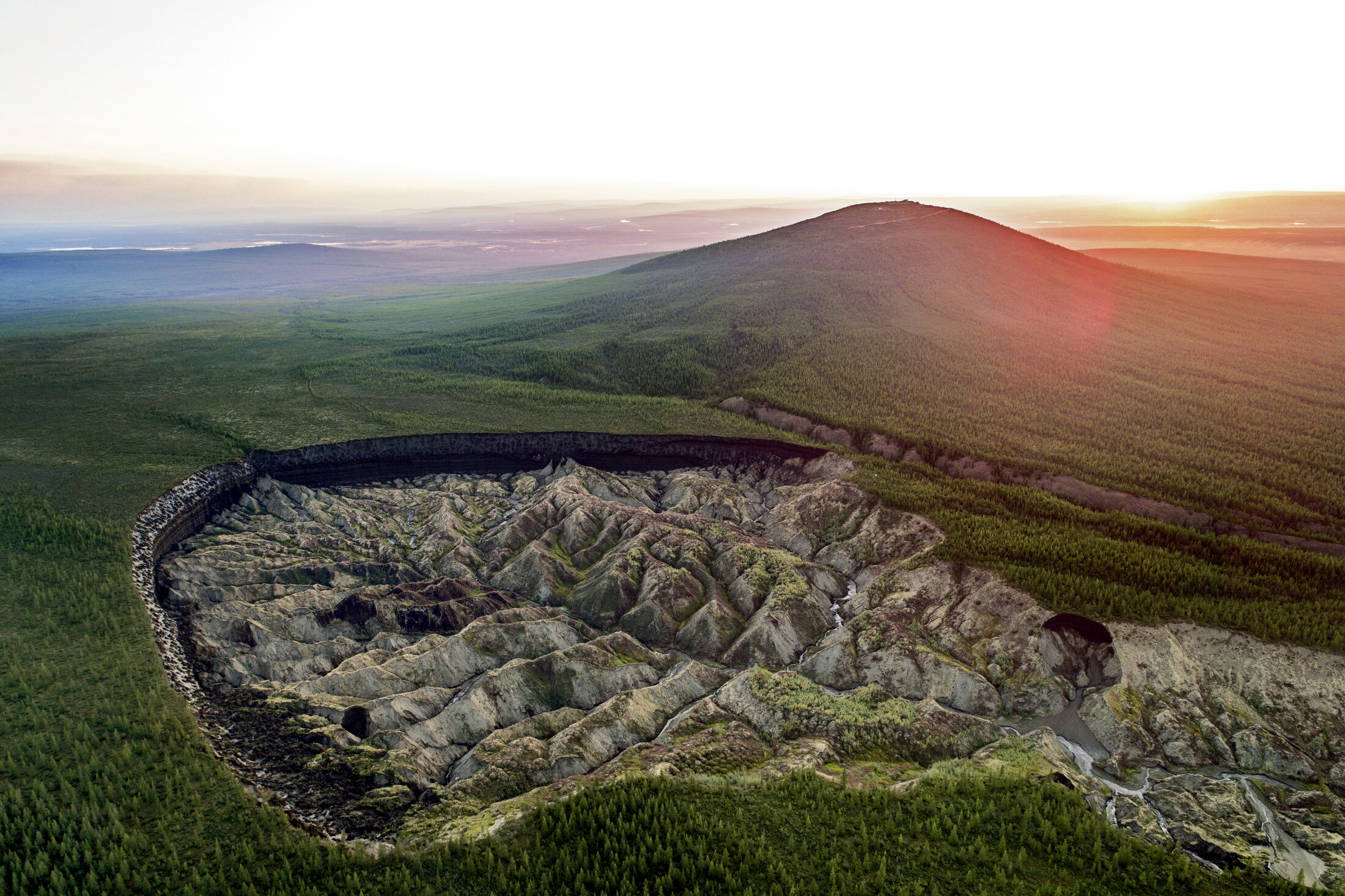
The Batagaika Crater in the Siberian town of Batagay, Russia. It has been called the "hell crater" or the "gateway to the underworld.Ó Over 300 feet deep and 1 kilometer long, this thermokarst depression is one of the biggest in the world, and started forming in the 1960s when the permafrost under the area began to thaw after nearby forests were cleared. There's over 200,000 thousand years of history and climate information within the permafrost of this thermokarst depression, or "megaslump," and just as many years of methane that could be released into the atmosphere. As the rate of permafrost thaw accelerates in Siberia, the crater grows bigger, unearthing even more layers of ancient soil. Archeologists have found numerous artifacts from the ice age.

The Batagaika Crater in the Siberian town of Batagay, Russia. August 8th, 2018. The crater, known as the "hell crater" to locals, is a thermokarst depression, or permafrost “megaslump.” Roughly half a mile long and 300 feet deep, the Batagaika Crater started forming in the 1960s after nearby forests were cleared, exposing the ground to sun that heated up the ground, and the permafrost underneath it (when permafrost laced with ice thaws, earth collapses and forms craters and lakes). To this day the crater continues to grow. The ancient soils of Arctic permafrost, seen in the wall of the crater, hold the organic remains of leaves, grass, and animals that died thousands of years ago, during the Ice Age. All that carbon had been safely bound in frozen earth—until now. Arctic permafrost is thawing much faster than expected, releasing carbon gases that could drastically speed up climate change.
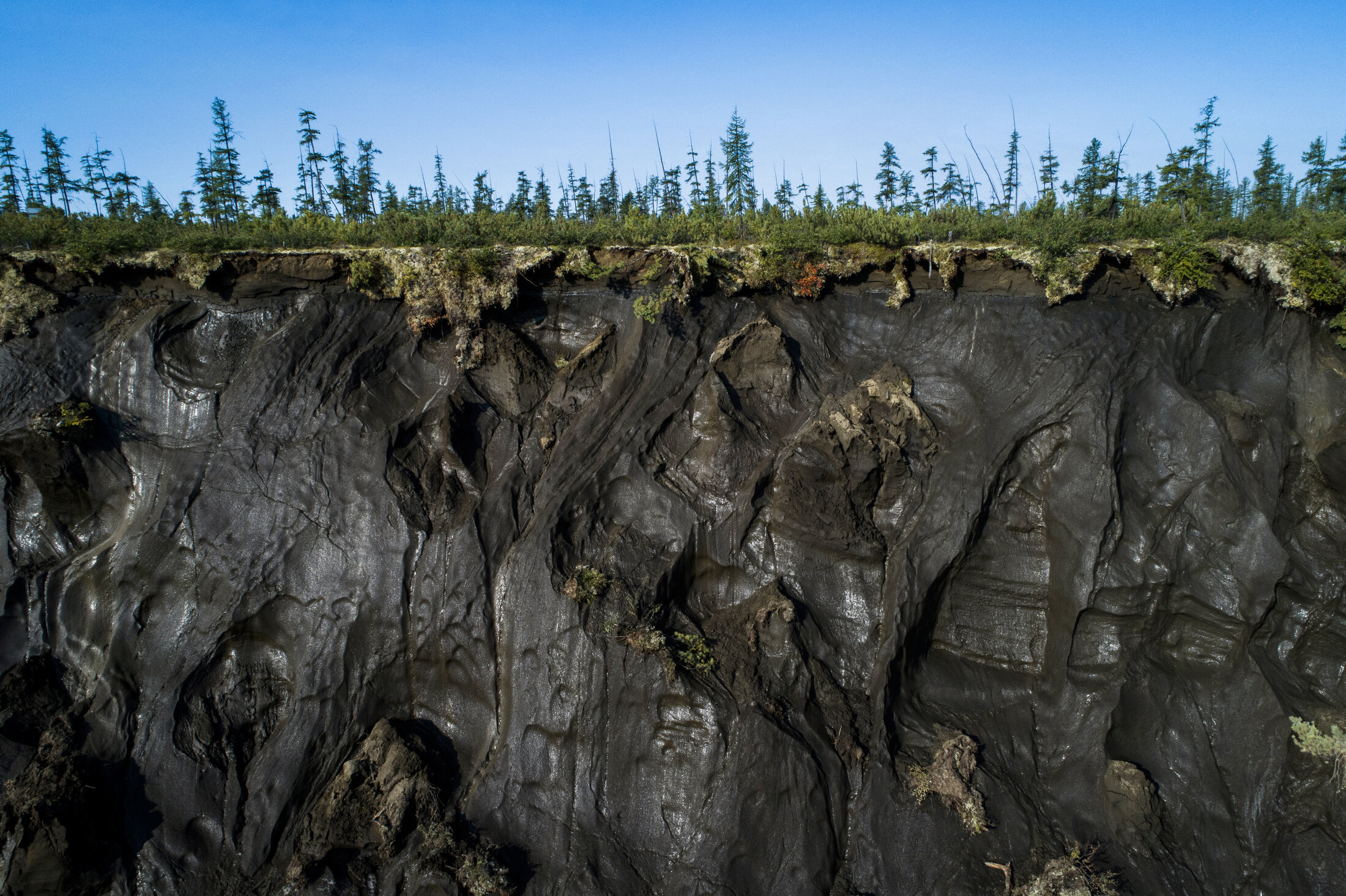
Permafrost along the perimeter of the Batagaika Crater in the Siberian town of Batagay, Russia. It has been called the "hell crater" or the "gateway to the underworld.Ó Over 300 feet deep and 1 kilometer long, this thermokarst depression is one of the biggest in the world, and started forming in the 1960s when the permafrost under the area began to thaw after nearby forests were cleared. There's over 200,000 thousand years of history and climate information within the permafrost of this thermokarst depression, or "megaslump," and just as many years of methane that could be released into the atmosphere. As the rate of permafrost thaw accelerates in Siberia, the crater grows bigger, unearthing even more layers of ancient soil. Archeologists have found numerous artifacts from the ice age.

Sergey holds a tool used to measure permafrost depth on a trip to a weather and research station near Chersky, Siberia with Sergey Zimov located where the Kolyma river meets the Arctic Ocean. Sergey founded the neighboring Northeast Science Station, as well as the large-scale scientific experiment Pleistocene Park. Both projects also run by his son Nikita Zimov. The Zimovs believe that by recreating the ecosystem of the Pleistocene era, which was dominated by grasslands and large mammals, they can slow down permafrost thaw and it's inevitable emission of greenhouse gases. July 29, 2018.
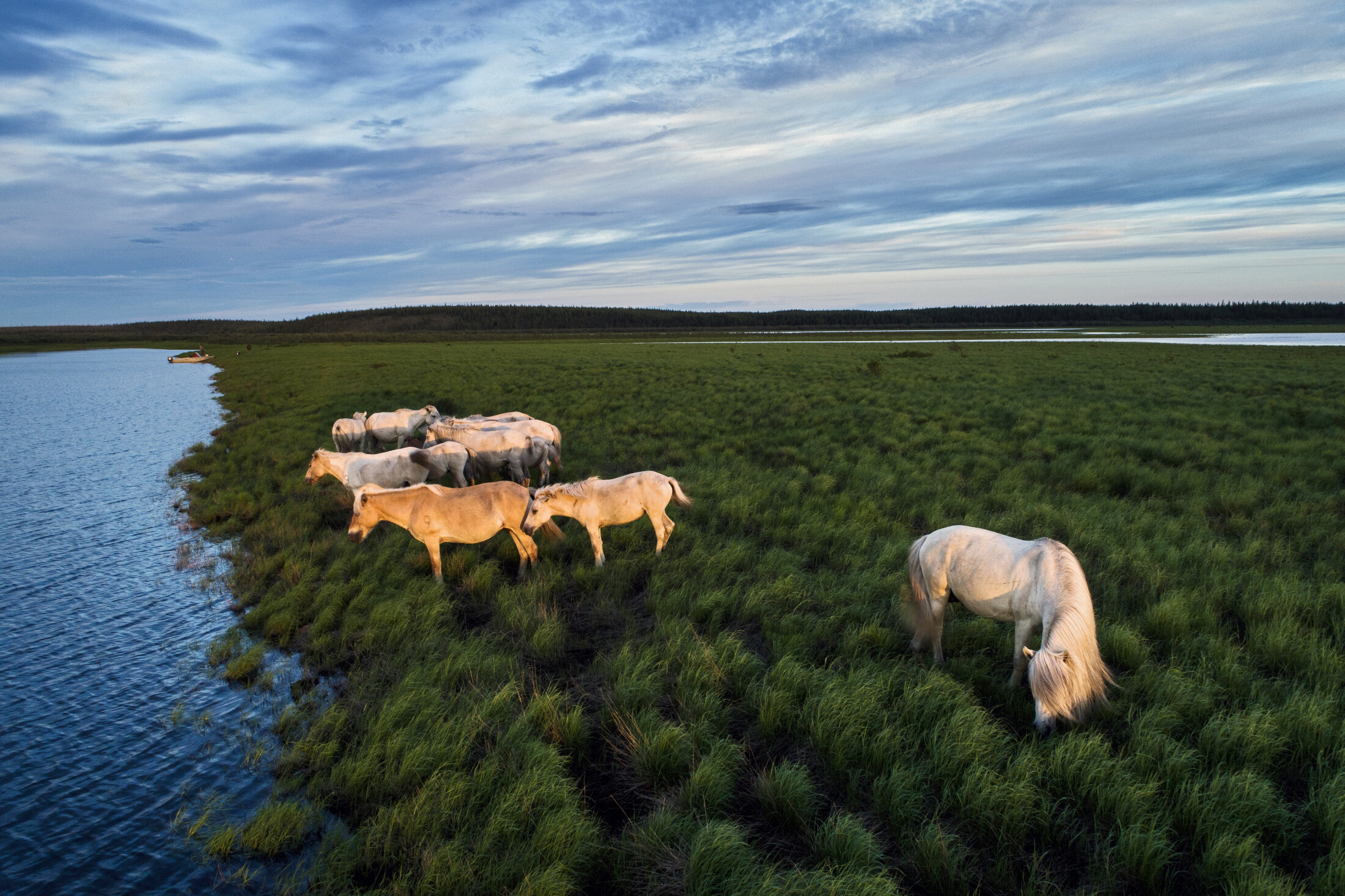
Aerial images of Pleistocene Park and surroundings outside of the small town of Cherskiy, Siberia. Pleistocene Park, a nature reserve and research station along the Kolyma river in the northeast of Siberia, is also a large-scale scientific expirement created by Sergey Zimov and run by his son Nikita Zimov. The Zimovs believe that by recreating the ecosystem of the Pleistocene era, which was dominated by grasslands and large mammals, they can slow down permafrost thaw and it's inevitable emission of greenhouse gases. August 3, 2018.
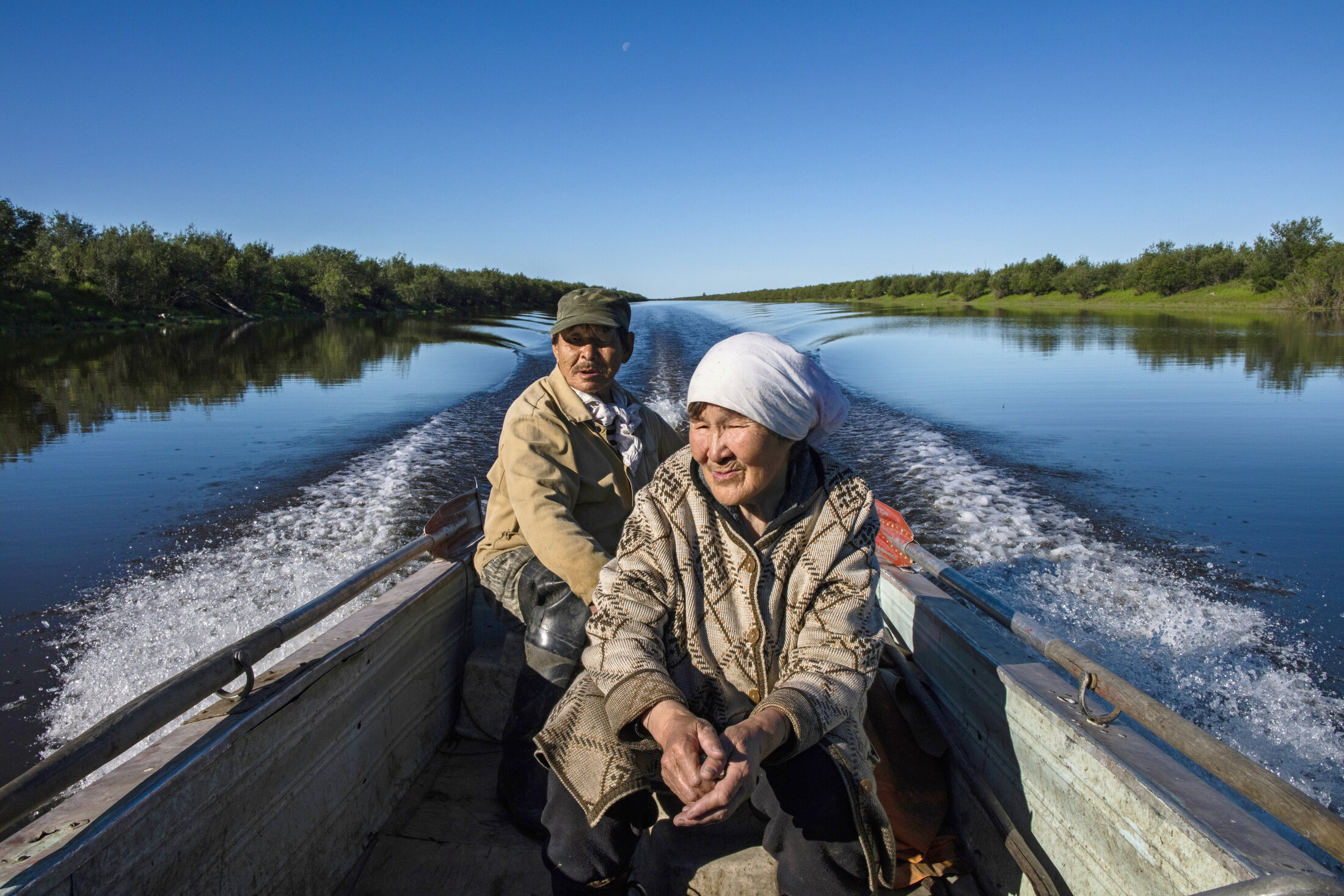
Nikolai and Ivana check their fish line near their home outside of Chersky, Siberia. Families in this region depend on fishing and hunting as dietary staples, and struggle to keep their fish and meat fresh with their ice cellars, or freezers, that are dug into the permafrost constantly flooding as a result of climate change.
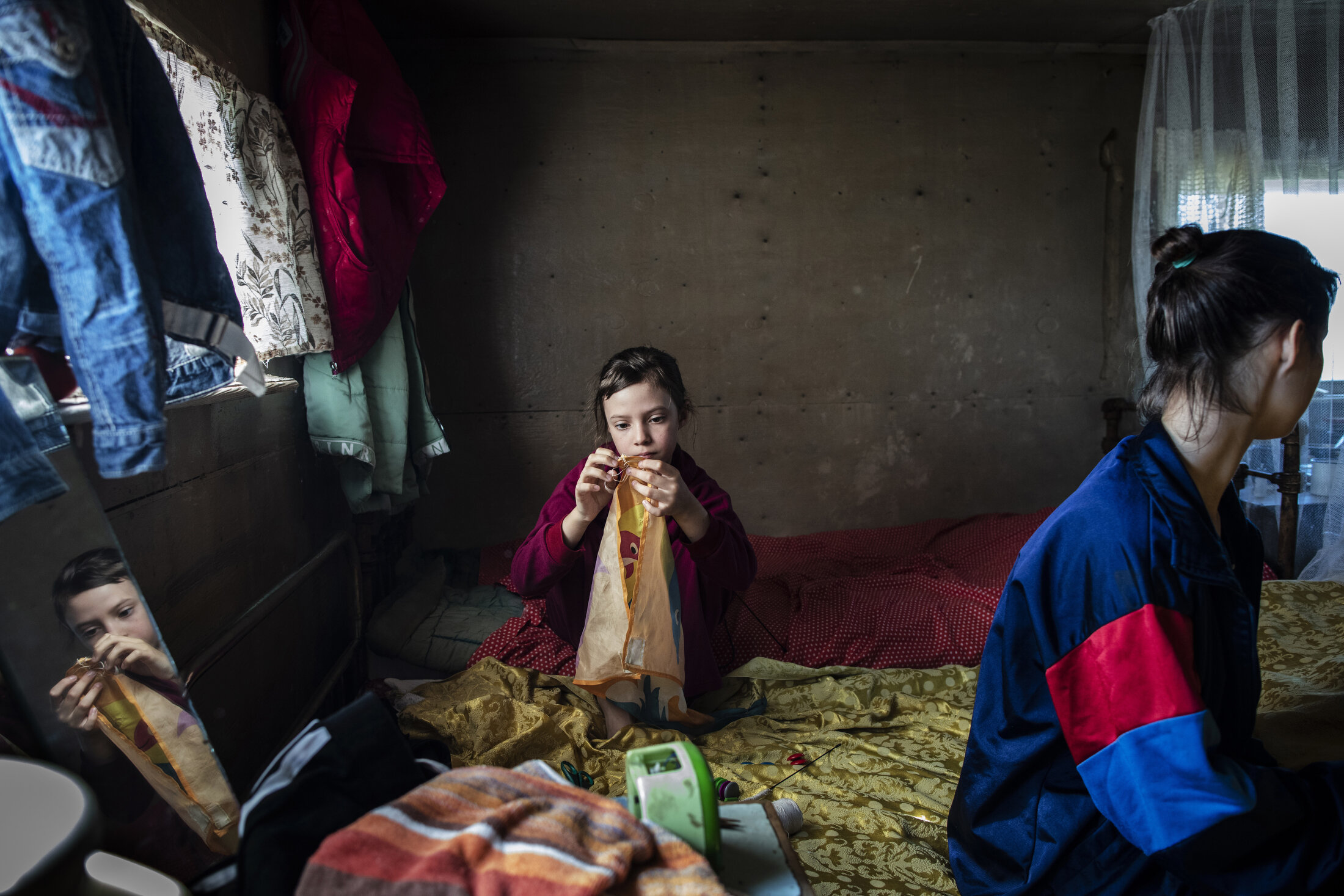
Edic's daughters at their cabin outside of Chersky, Siberia. Families in this region depend on fishing and hunting as dietary staples, and struggle to keep their fish and meat fresh with their ice cellars, or freezers, that are dug into the permafrost constantly flooding as a result of climate change.
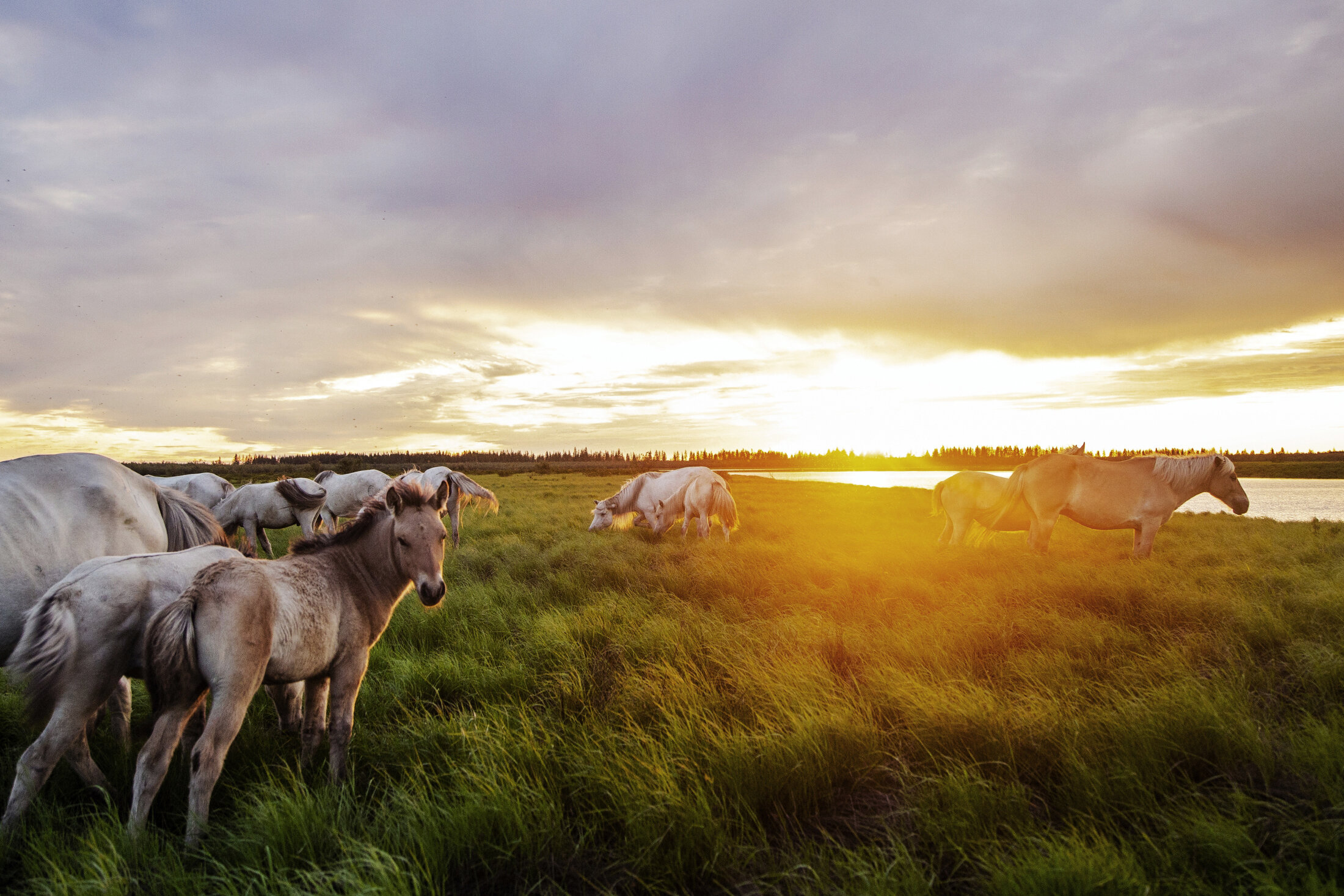
Pleistocene Park near Chersky, Siberia. Pleistocene Park, a nature reserve and research station along the Kolyma river in the northeast of Siberia, is also a large-scale scientific experiment created by Sergey Zimov and run by his son Nikita Zimov (pictured here). The Zimovs believe that by recreating the ecosystem of the Pleistocene era, which was dominated by grasslands and large mammals, they can slow down permafrost thaw and it's inevitable emission of greenhouse gases. August 3, 2018.
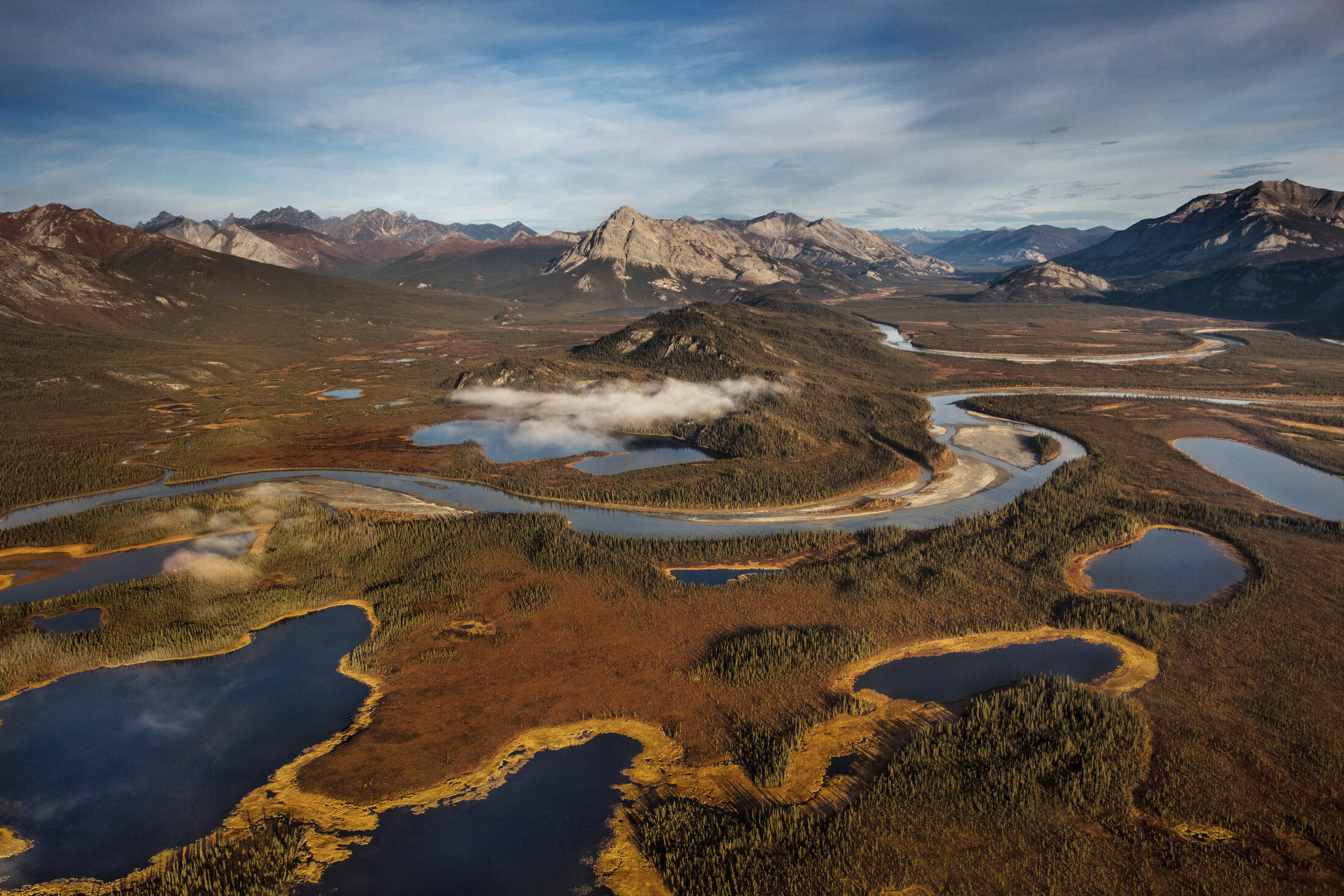
Flying over the head water of the Alatna River in Gates of the Arctic national Park on an expedition that followed ecologist Ken Tape, guide Michael Wald and National Geographic writer Craig Welch as they look at the ecological impact of beavers in the Arctic for approximately 64 river miles along the Alatna River. On this expedition the team was able to confirm that the Alatna river corridor provided the route that beavers took to cross the Continental Divide of the Brooks Range and move north. Arctic Tree-line is the area between tundra and forest, defined as the northernmost latitude in the Northern Hemisphere where trees can grow. Studies show that tree-line is moving north as a result of climate change. Beavers are among a number of animal species, such as moose and snowshoe hare, that are moving north as a result of warming weather and climate change. By the time these new trees arrive and move tree-line, the tundra will already be completely transformed (think thawed permafrost everywhere, new tall shrubby vegetation and different wildlife). And with permafrost thawing and snow duration shorter, wildlife are already capitalizing. Beavers in particular have the unique ability to singlehandedly transform a landscape in a variety of irreversible ways such as building dams, clearing trees and creating ponds and meadows. Scientists like Ken Tape are only just beginning to understand what this means for the future, in particular the impact these landscape changes could have on accelerating permafrost thaw.
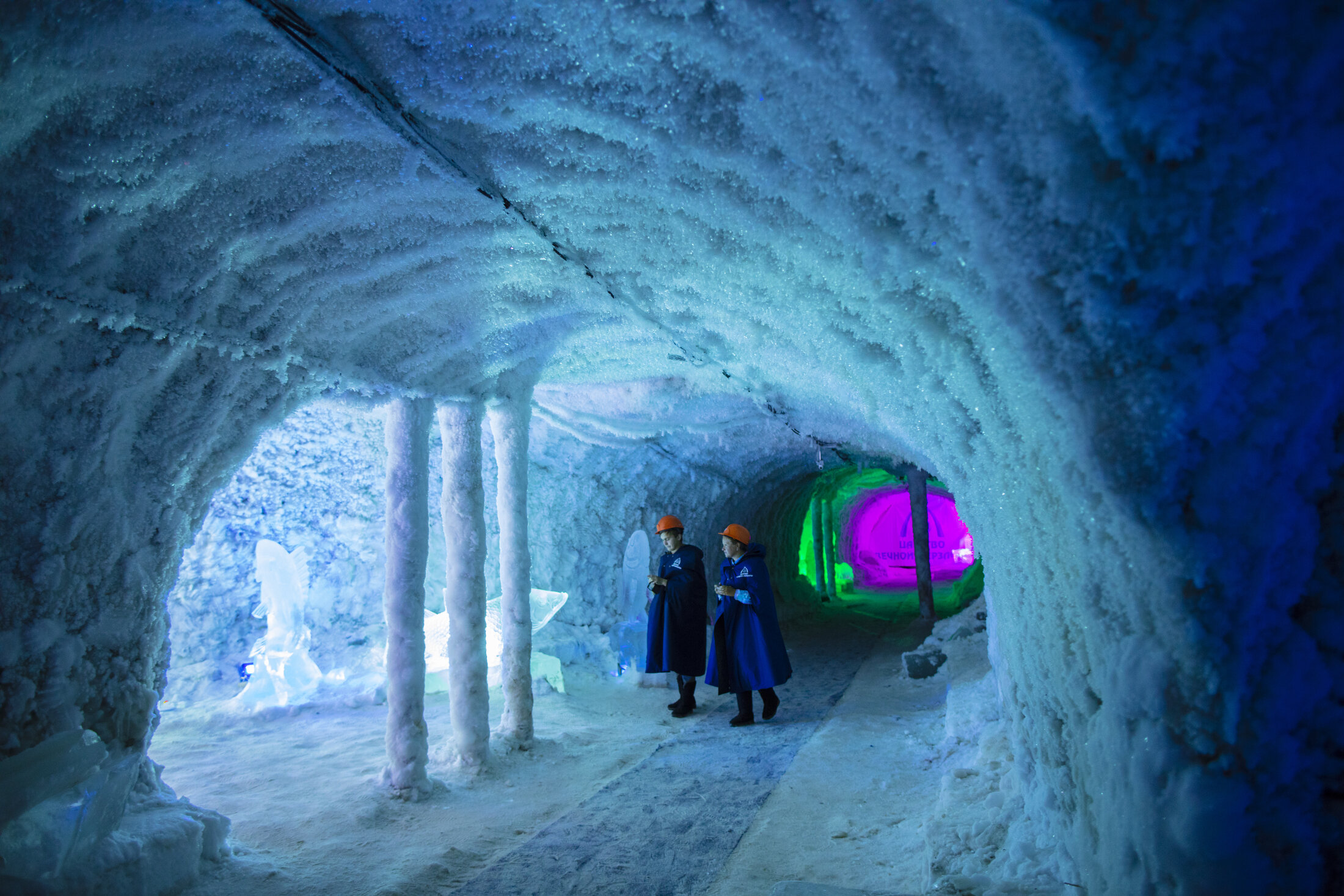
The "Kingdom of Permafrost" museum, a tourist attraction that includes walking through permafrost tunnels decorated with psychedelic lights and ice sculptures, is dug into the side of a hill on the outskirts of Yakutsk, Siberia. Yakutsk is one of the only cities in the world built entirely on permafrost, a layer of frozen soil that spans the global North and up until recently remained completely frozen all year round. July 25, 2018.

Sarah Orlinsky Maitland chopping wood in her home in the Catskills of New York. Photo by Katie OrlinskyRELEASE ATTACHEDAn ice cellar at Edic and his family's cabin outside of Chersky, Siberia. Families in this region depend on fishing, hunting and home-made summertime greenhouses as food is scarce and expensive in such an isolated region, and climate change is threatening all of the above. Ice cellars that have been dug into the permafrost for thousands of years are crucial for storing food, but the ice cellars in and around Chersky are now flooding on an annual basis due to permafrost thaw. Some are completely destroyed, and without them, food will spoil which is a serious issue in such a remote location. August 6, 2018.
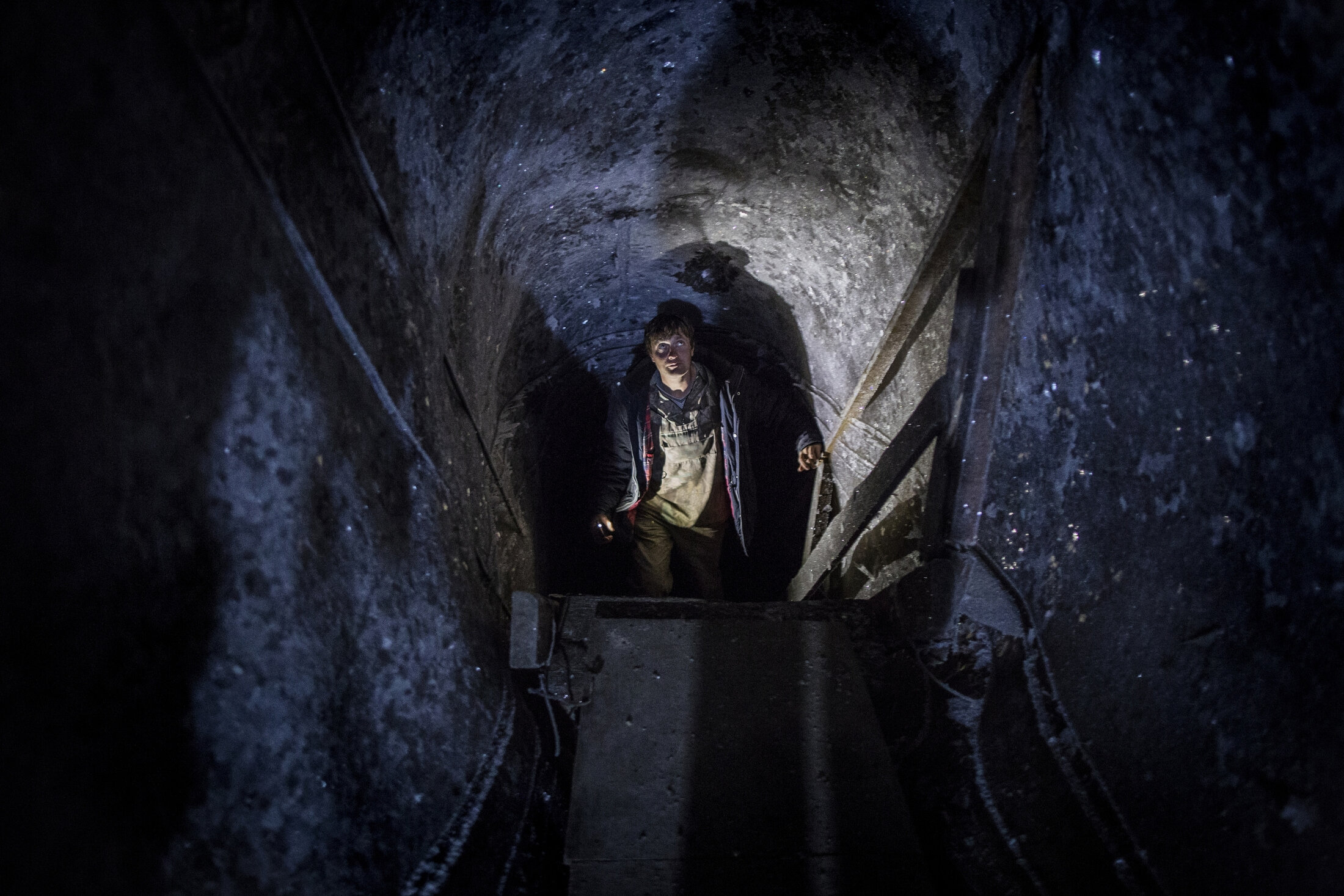
Nikita Zimov in the Pleistocene Park ice cellar. Ice cellars, or freezers, have been dug into the permafrost for thousands of years. The ice cellars in and around Chersky, Siberia are now flooding on an annual basis due to permafrost thaw. Some are completely destroyed, and without them, food will spoil which is a serious issue in such a remote location.

Scientist Sergey Zimov digs up mammoth and bison bones at Duvanny Yar, a permafrost "megaslump," also known as a thermokarst depression. The area is an important scientific destination for scientists studying permafrost thaw, as well as the history of late pleistocene era Beringia land, with thousands of years of historical and climate information located in it's layers of crumbling soil. Sergey founded the neighboring Northeast Science Station, as well as the large-scale scientific experiment Pleistocene Park. Both projects also run by his son Nikita Zimov. The Zimovs believe that by recreating the ecosystem of the Pleistocene era, which was dominated by grasslands and large mammals, they can slow down permafrost thaw and it's inevitable emission of greenhouse gases. Sergey Zimov digs up mammoth and bison bones at Duvanny Yar, a massive permafrost a key strategic cross-section of Late Quaternary period East Siberian stratigraphy[2][10][11] and "an important key section for the palaeo-environmental history of the Late Pleistocene Beringia Land, the non-glaciated landmass between the Taymyr Peninsula and Alaska."on the Kolyma river in Cherskiy, Siberia. Sergey founded the neighboring Northeast Science Station, as well as the large-scale scientific experiment Pleistocene Park. Both projects also run by his son Nikita Zimov. The Zimovs believe that by recreating the ecosystem of the Pleistocene era, which was dominated by grasslands and large mammals, they can slow down permafrost thaw and it's inevitable emission of greenhouse gases.
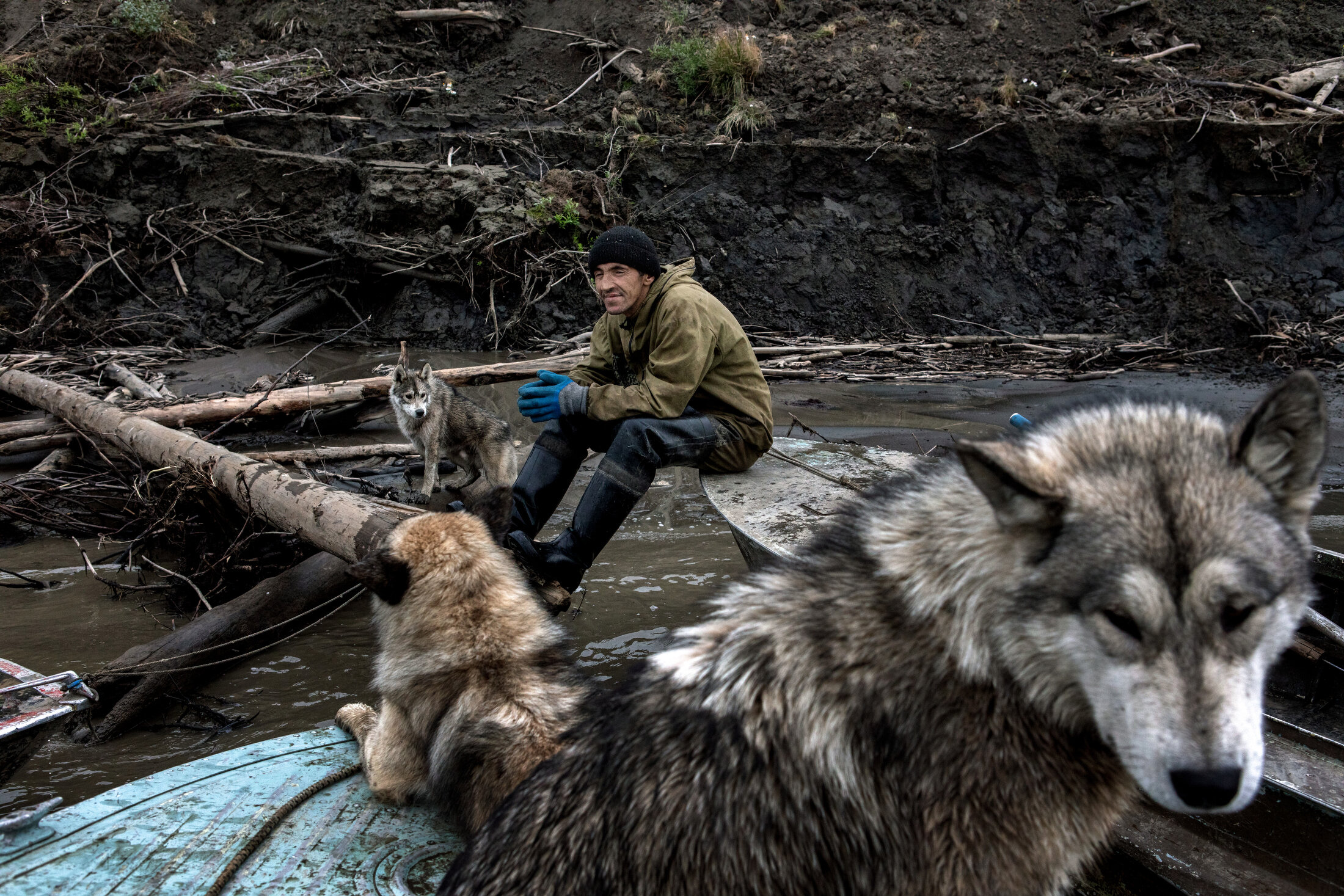
Mammoth tusk hunters at Duvanny Yar, a permafrost "megaslump," also known as a thermokarst depression, located 3 hours away from Chersky, Siberia. The area is an important scientific destination for scientists studying permafrost thaw, as well as the history of late pleistocene era Beringia land, with thousands of years of historical and climate information located in its layers of crumbling soil. Sergey founded the neighboring Northeast Science Station, as well as the large-scale scientific experiment Pleistocene Park. Both projects also run by his son Nikita Zimov. The Zimovs believe that by recreating the ecosystem of the Pleistocene era, which was dominated by grasslands and large mammals, they can slow down permafrost thaw and it's inevitable emission of greenhouse gases. July 31, 2018.
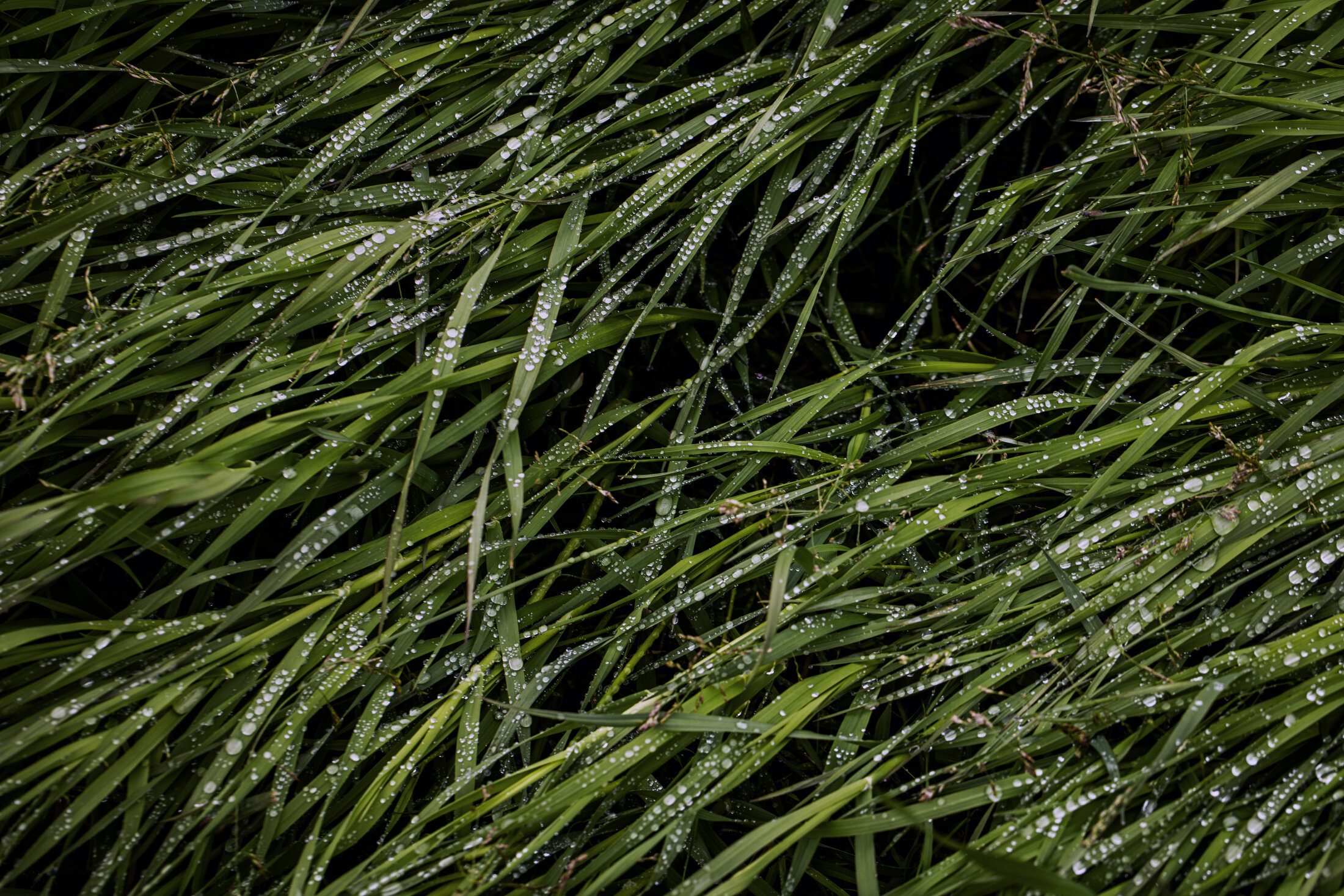
Tundra grass at a weather and research station near Cherskiy, Siberia where the Kolyma river meets the Arctic Ocean. Sergey Zimov founded the neighboring Northeast Science Station, as well as the large-scale scientific experiment Pleistocene Park. Both projects also run by his son Nikita Zimov. The Zimovs believe that by recreating the ecosystem of the Pleistocene era, which was dominated by grasslands and large mammals, they can slow down permafrost thaw and it's inevitable emission of greenhouse gases.
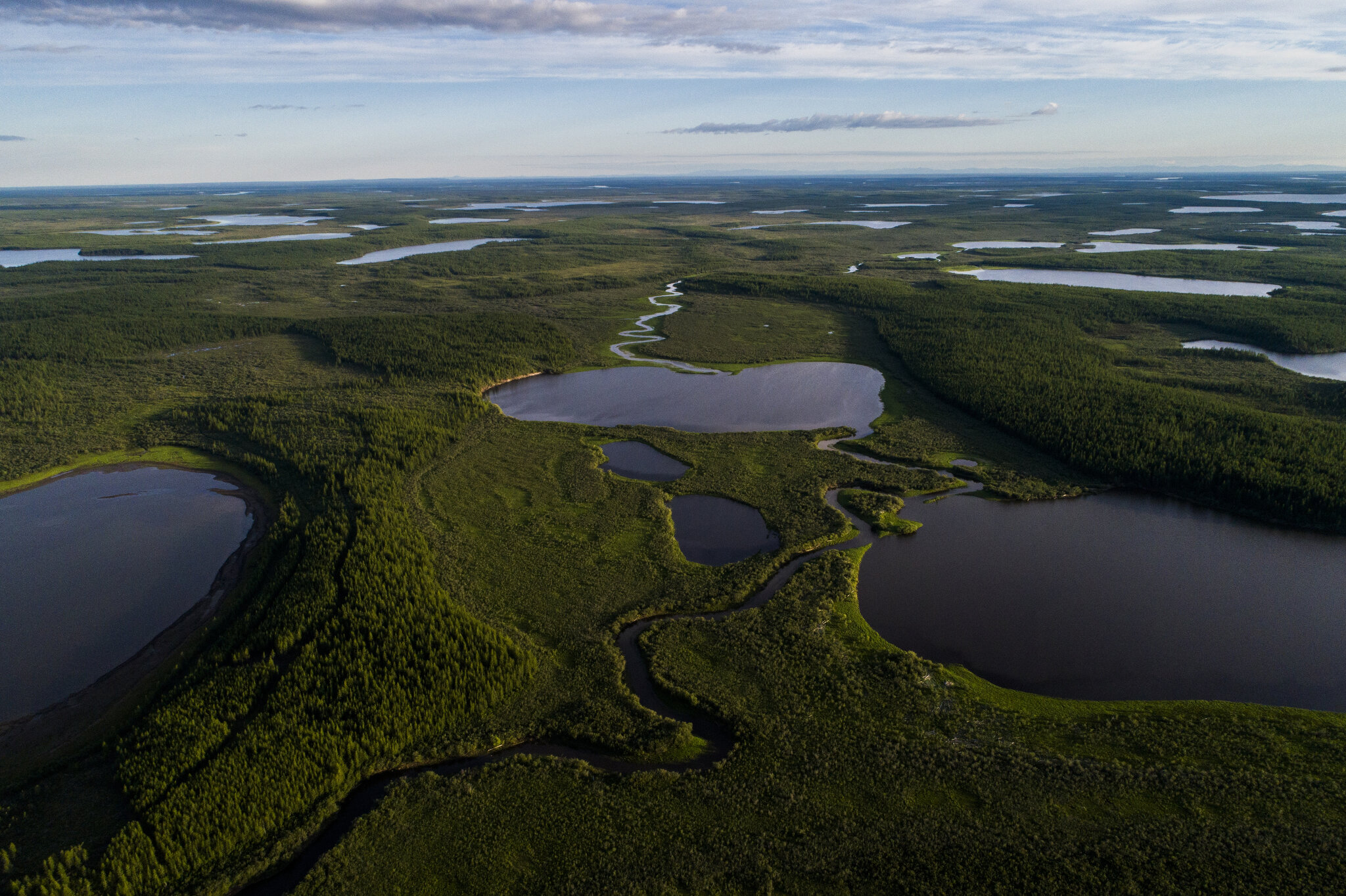
Copyright Katie Orlinsky
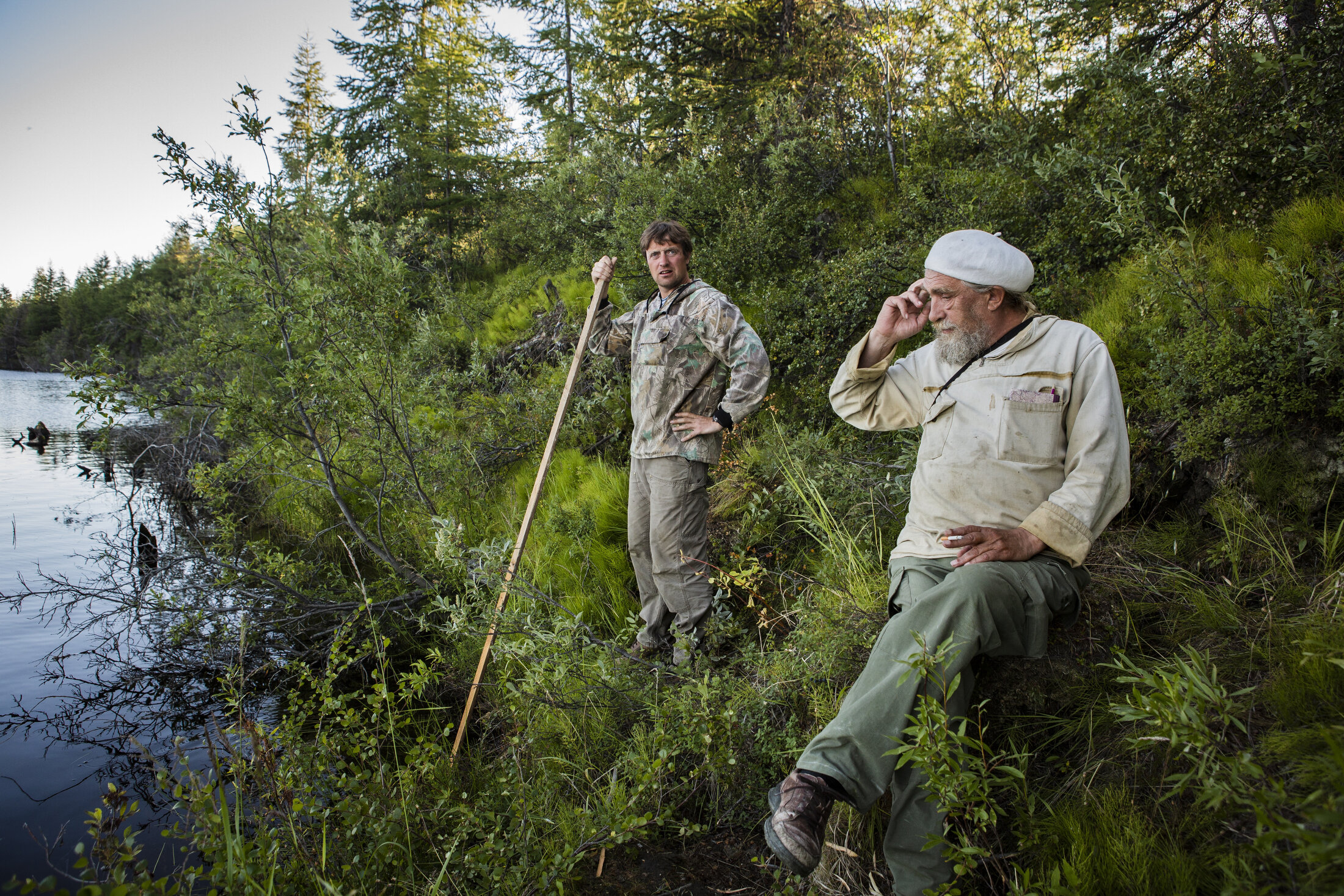
Sergey and Nikita Zimov, who is making methane bubbles with a stick, by a lake that is expanding due to permafrost thaw near the Northeast Science Station which he founded in Chersky, Siberia along the Kolyma river. About an hour upriver is the large-scale scientific experiment Pleistocene Park, run by Segey and his son Nikita Zimov. The Zimovs believe that by recreating the ecosystem of the Pleistocene era, which was dominated by grasslands and large mammals, they can slow down permafrost thaw and it's inevitable emission of greenhouse gases. August 6th, 2018.
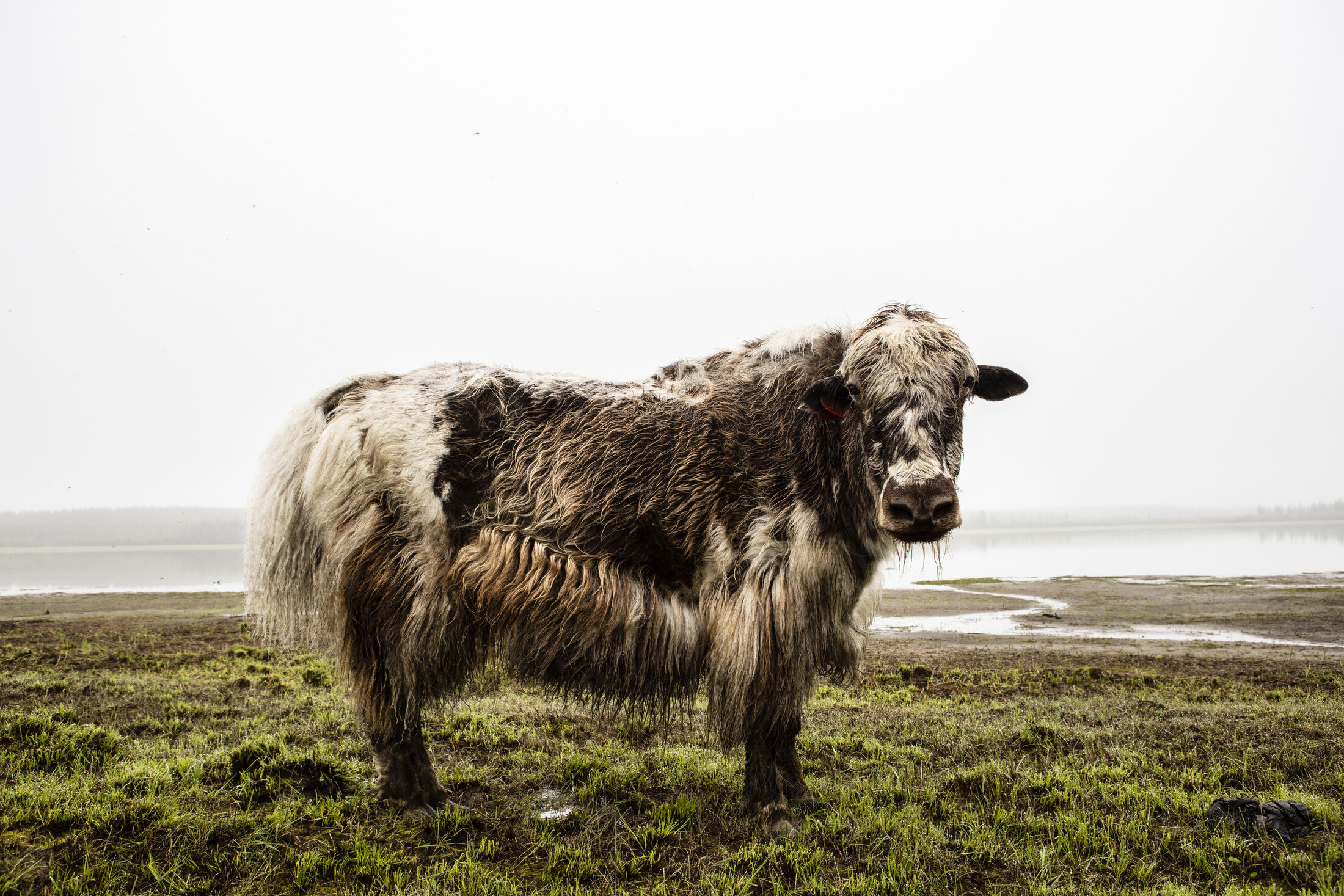
Yak by the lake. More than a dozen yaks currently roam around Pleistocene Park outside of Cherskiy, Siberia. Pleistocene Park, a nature reserve and research station along the Kolyma river in the northeast of Siberia, is also a large-scale scientific expirement created by Sergey Zimov and run by his son Nikita Zimov. The Zimovs believe that by recreating the ecosystem of the Pleistocene era, which was dominated by grasslands and large mammals, they can slow down permafrost thaw and it's inevitable emission of greenhouse gases. July 31, 2018.
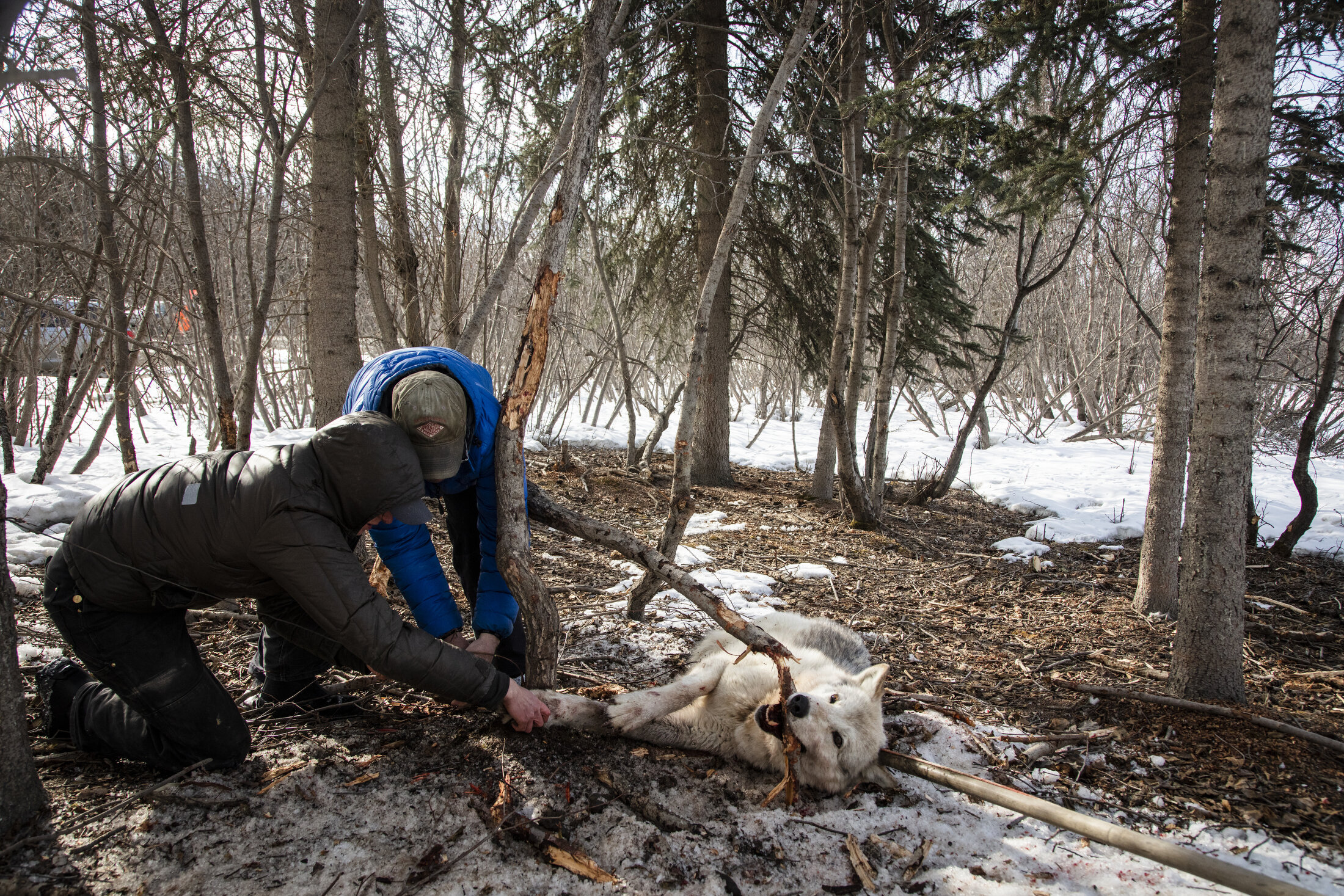
A wolf is found caught in a rusty old animal trap along the Dalton Highway in Alaska and scientist Claire Montgomerie and local passersby help to free the wolf. May 4, 2018.
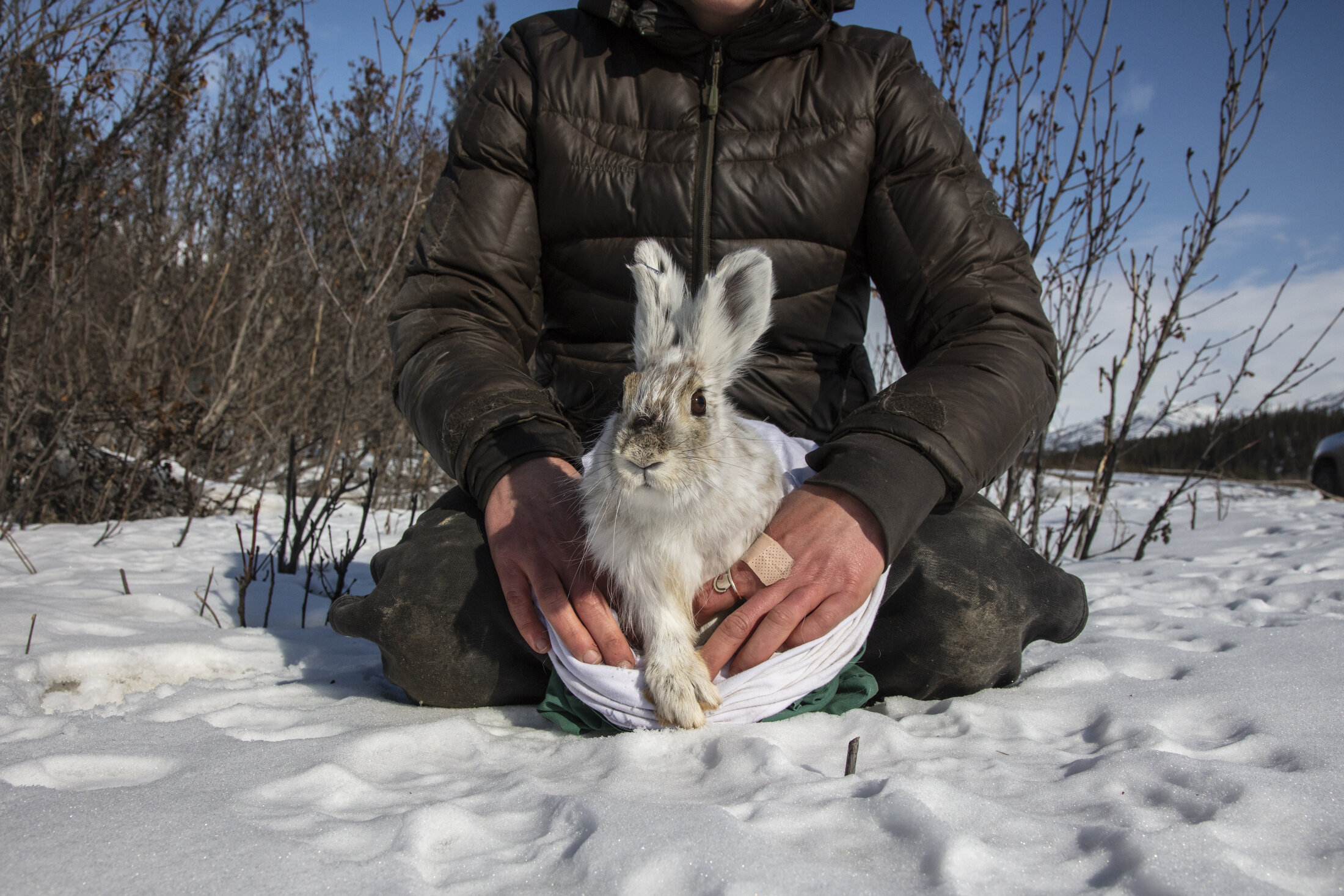
Scientist Claire Montgomerie from University of Alaska Fairbanks at a snowshoe hare research site along the Dalton Highway in Alaska on May 4, 2018.
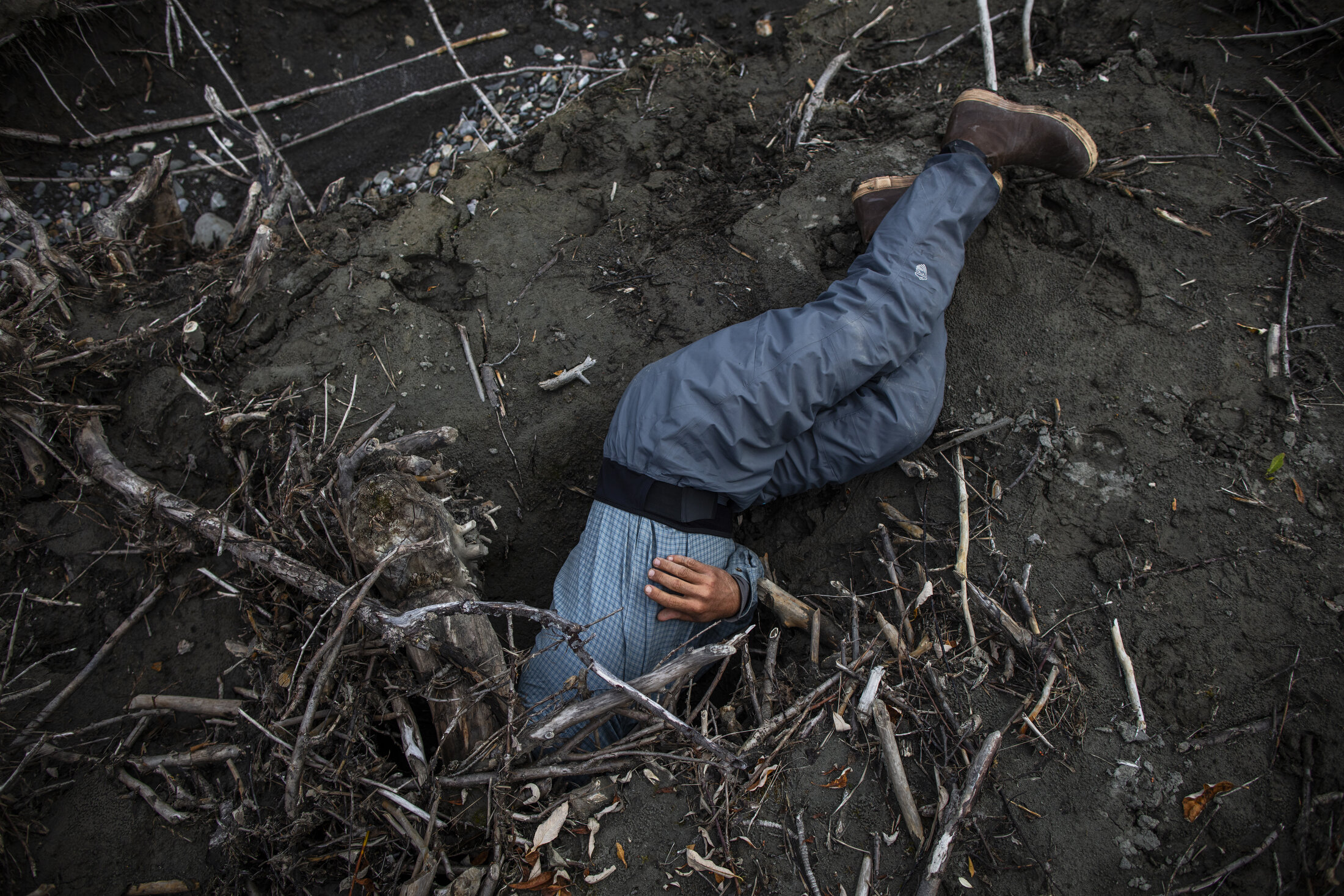
Exploring an entryway to an abandoned beaver dam on an expedition that follows ecologist Ken Tape, guide Michael Wald (Pictured here)and National Geographic writer Craig Welch as they look at the ecological impact of beavers in the Arctic for approximately 64 river miles along the Alatna River in Gates of the Arctic National Park in the Brooks Range of Alaska. Beavers are among a number of animal species moving north as a result of warming weather and climate change, however they have the unique ability to singlehandedly transform the landscape in a variety of irreversible ways such as building dams, clearing trees and creating ponds and meadows. Scientists like Ken Tape are only just beginning to understand what this means for the future, in particular the impact these landscape changes could have on accelerating permafrost thaw. Photo by Katie Orlinsky. September 2018.An expedition that follows ecologist Ken Tape, guide Michael Wald and National Geographic writer Craig Welch as they look at the ecological impact of beavers in the Arctic for approximately 64 river miles along the Alatna River in Gates of the Arctic National Park in the Brooks Range of Alaska. Beavers are among a number of animal species moving north as a result of warming weather and climate change, however they have the unique ability to singlehandedly transform the landscape in a variety of irreversible ways such as building dams, clearing trees and creating ponds and meadows. Scientists like Ken Tape are only just beginning to understand what this means for the future, in particular the impact these landscape changes could have on accelerating permafrost thaw. Photo by Katie Orlinsky. September 2018.
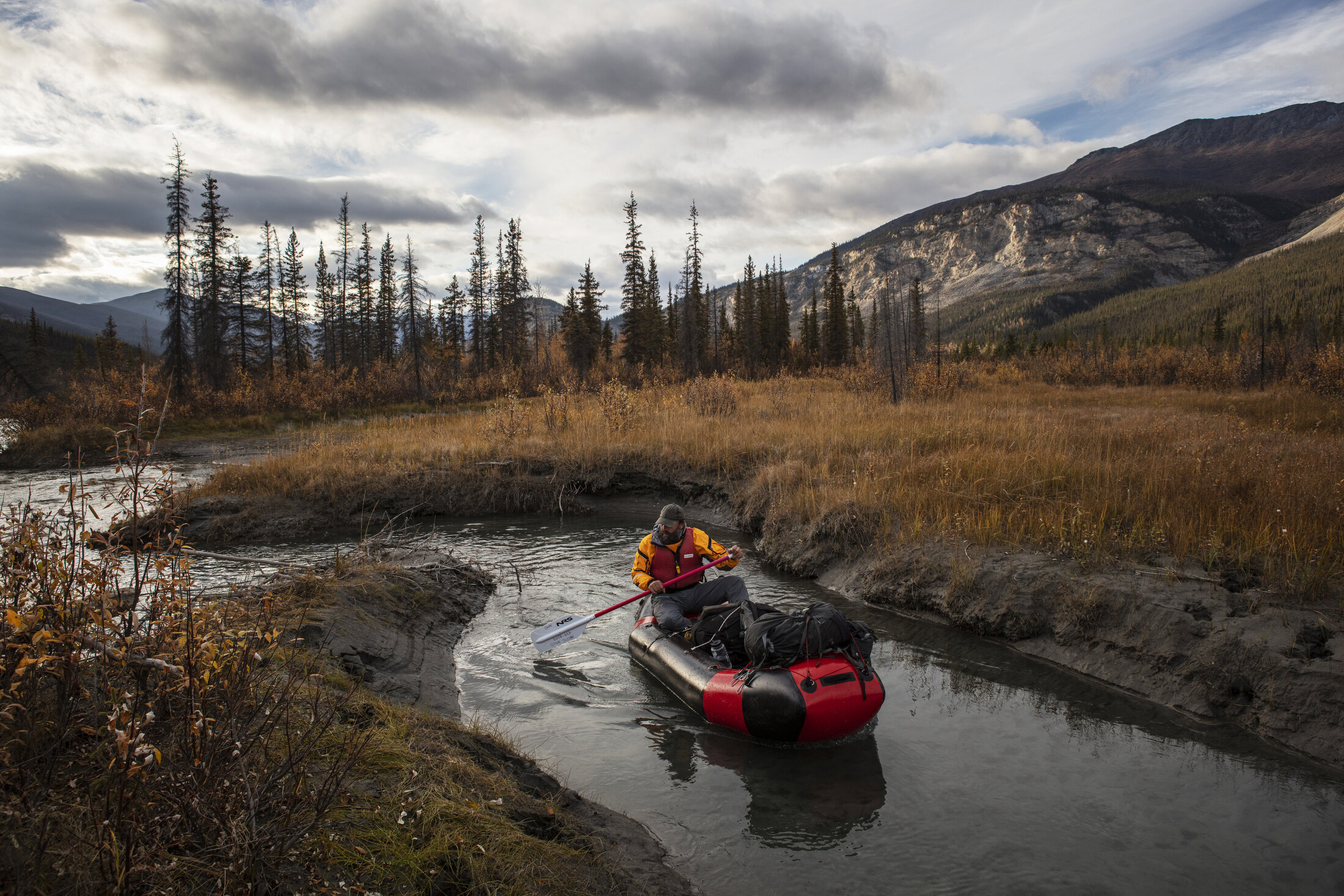
Pack-rafting to explore an overgrown beaver dam waterway expedition that follows ecologist Ken Tape, guide Michael Wald (Pictured here) and National Geographic writer Craig Welch as they look at the ecological impact of beavers in the Arctic for approximately 64 river miles along the Alatna River in Gates of the Arctic National Park in the Brooks Range of Alaska. Beavers are among a number of animal species moving north as a result of warming weather and climate change, however they have the unique ability to singlehandedly transform the landscape in a variety of irreversible ways such as building dams, clearing trees and creating ponds and meadows. Scientists like Ken Tape are only just beginning to understand what this means for the future, in particular the impact these landscape changes could have on accelerating permafrost thaw. Photo by Katie Orlinsky. September 2018.Pack-rafting on an expedition that follows ecologist Ken Tape, guide Michael Wald (Pictured here) and National Geographic writer Craig Welch as they look at the ecological impact of beavers in the Arctic for approximately 64 river miles along the Alatna River in Gates of the Arctic National Park in the Brooks Range of Alaska. Beavers are among a number of animal species moving north as a result of warming weather and climate change, however they have the unique ability to singlehandedly transform the landscape in a variety of irreversible ways such as building dams, clearing trees and creating ponds and meadows. Scientists like Ken Tape are only just beginning to understand what this means for the future, in particular the impact these landscape changes could have on accelerating permafrost thaw. Photo by Katie Orlinsky. September 2018.An expedition that follows ecologist Ken Tape, guide Michael Wald and National Geographic writer Craig Welch as they look at the ecological impact of beavers in the Arctic for approximately 64 river miles along the Alatna River in Gates of the Arctic National Park in the Brooks Range of Alaska. Beavers are among a number of animal species moving north as a result of warming weather and climate change, however they have the unique ability to singlehandedly transform the landscape in a variety of irreversible ways such as building dams, clearing trees and creating ponds and meadows. Scientists like Ken Tape are only just beginning to understand what this means for the future, in particular the impact these landscape changes could have on accelerating permafrost thaw. Photo by Katie Orlinsky. September 2018.
PROJECTS
The Carbon Threat
By Katie Orlinsky
Across nine million square miles at the top of the planet, climate change is writing a new chapter. Arctic permafrost is thawing much faster than expected, releasing carbon gases that could reshape the planet and drastically speed up global warming. It is already transforming the landscape and changing the lives of people and animals from Alaska to Siberia.
Permafrost, found mostly in the Arctic, is a layer of continuously frozen soil that covers almost 1/4th of the Earth’s surface. Most permafrost areas have been frozen for more than 10,000 years. Trapped inside permafrost are carbon dioxide and methane gas built up from thousands of years of decomposing organic matter-greenhouse gases that if released into the atmosphere by permafrost thaw will make today’s fossil fuel emissions look like chump change.
We are now dangerously close to a tipping point where permafrost thaw will feed on itself, releasing more greenhouse gases, which will fuel more warming. Geologically speaking, permafrost is thawing almost overnight. What scientists came to believe was once hundreds of years away could now happen in our lifetime, with permafrost thaw releasing 2 to nearly three 3 times more greenhouse gases than expected. It is perhaps the least appreciated and well-known reason to hasten a transition to cleaner energy.
Related content
publications
Arctic permafrost is thawing fast. That affects us all. National Geographic Magazine
Awards
2020 World Press Photo, 3rd Prize, Environmental Story


